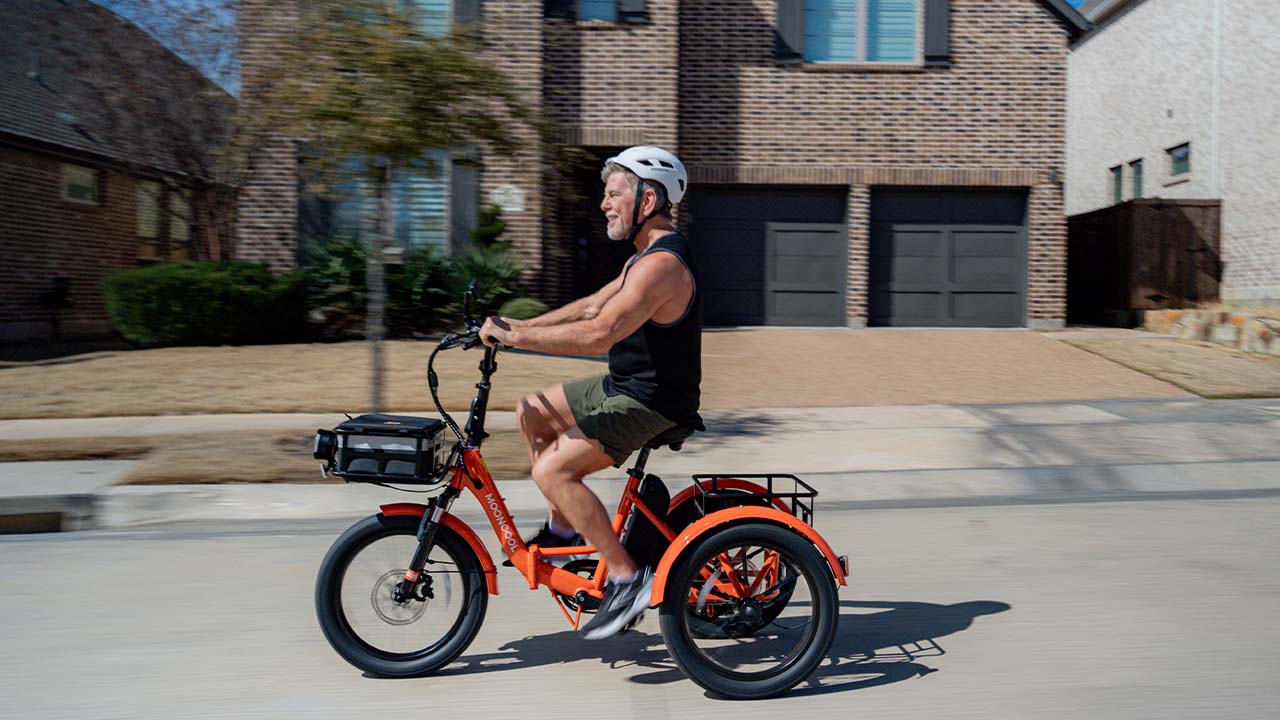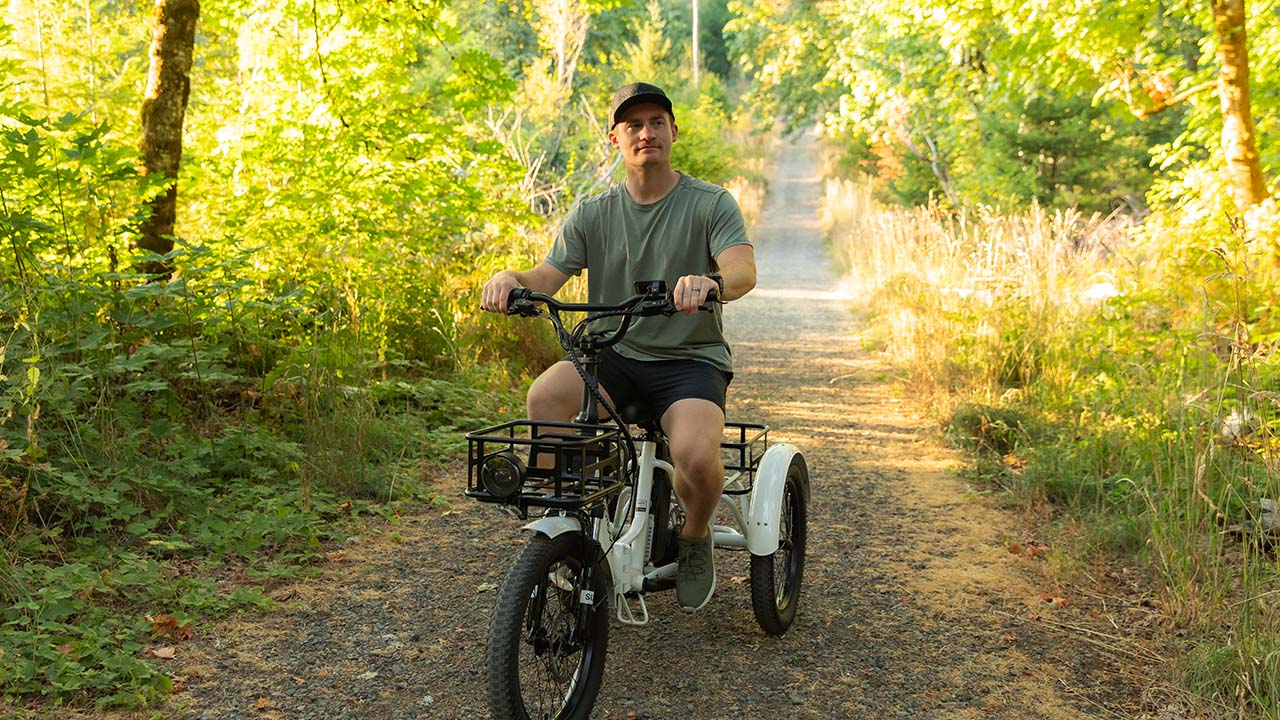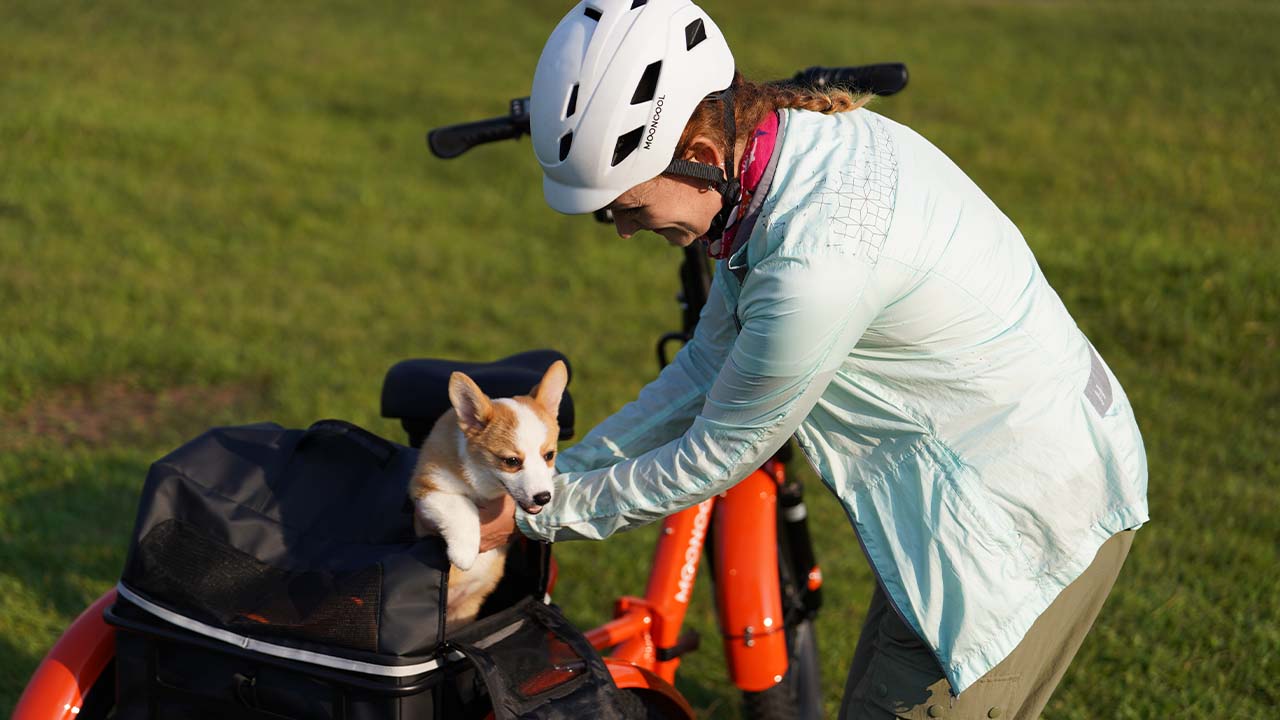La sécurité est souvent la priorité absolue pour quiconque envisage d'acheter un tricycle électrique. C'est particulièrement vrai pour les personnes âgées, les aidants et les familles qui recherchent une conduite fiable et stable. Un tricycle électrique bien conçu offre une tranquillité d'esprit en réduisant les risques et en offrant un contrôle et une visibilité optimales dans toutes les conditions de conduite. Cependant, tous les tricycles électriques ne sont pas identiques ; comprendre les caractéristiques de sécurité vous aidera donc à choisir celui qui répond à vos normes de sécurité.
Dans ce blog, nous allons décomposer les caractéristiques de sécurité essentielles des tricycles électriques, expliquer pourquoi elles sont importantes et montrer comment le TK1 Folding de Mooncool favorise une conduite en toute confiance.
Avantages de la stabilité des trois roues
Le principal avantage d'un tricycle électrique en matière de sécurité réside dans sa stabilité. Contrairement aux vélos à deux roues classiques, qui nécessitent un équilibre constant, les tricycles répartissent le poids sur trois roues. Cette base plus large réduit considérablement le risque de basculement, notamment au démarrage, à l'arrêt ou à faible vitesse. Pour les personnes âgées et à mobilité réduite, la capacité à rester debout sans réfléchir est source de confiance.
Certains tricycles électriques ont un espacement des roues arrière légèrement plus large, ce qui améliore encore la stabilité, notamment dans les virages. Un centre de gravité plus bas permet également au tricycle de rester stable sur les chemins accidentés ou lors du transport de marchandises.

Systèmes de freinage et distance d'arrêt
Un freinage fiable est essentiel à la sécurité sur un tricycle électrique. Les tricycles électriques utilisent généralement des freins à disque mécaniques ou hydrauliques. Les freins mécaniques utilisent un système de câbles, simple, abordable et plus facile à entretenir à domicile. Leur inconvénient est qu'ils nécessitent des réglages plus fréquents et sont moins puissants que les freins hydrauliques.
Les freins hydrauliques, quant à eux, utilisent la pression du fluide pour assurer un freinage plus doux et plus puissant. Ils réduisent également la fatigue des mains et sont plus performants par temps humide.
La distance d'arrêt d'un tricycle électrique dépend de la qualité des freins, de l'adhérence des pneus et du poids du cycliste. En général, les freins hydrauliques permettent de s'arrêter sur une distance plus courte et offrent un meilleur contrôle et des performances constantes. Par conséquent, si la sécurité est une priorité, choisissez un modèle équipé de freins à disque hydrauliques.
Éclairage et visibilité diurne
La visibilité est tout aussi importante que la puissance de freinage. La plupart des tricycles électriques de qualité sont équipés de feux avant et arrière. Il s'agit souvent de LED lumineuses avec différents modes pour alerter les autres usagers de la route de votre présence et éclairer la voie. Certains tricycles électriques sont même équipés de clignotants et de feux stop pour améliorer la communication dans la circulation. Des éléments réfléchissants sur les roues, les pédales ou le cadre améliorent la visibilité sans décharger la batterie.
Les feux de jour sont une autre fonctionnalité qui permet de garder les tricycles électriques visibles même en plein jour, lorsque des accidents peuvent encore se produire.
 Pneus et traction
Pneus et traction
Des pneus adaptés améliorent l'adhérence et réduisent le glissement. C'est particulièrement important pour les débutants ou ceux dont le temps de réaction est lent. Pour une traction maximale, optez pour des tricycles électriques équipés de pneus plus larges, qui offrent un meilleur contact avec la surface et une meilleure stabilité. Assurez-vous que les sculptures de la bande de roulement sont adaptées au terrain que vous utilisez le plus souvent, par exemple des pneus lisses pour les routes goudronnées et des pneus plus profonds pour le gravier ou les surfaces mixtes.
Maintenir une pression de pneu correcte est également crucial. Des pneus sous-gonflés peuvent réduire le contrôle et augmenter le risque de crevaison. Des pneus surgonflés réduisent l'adhérence et rendent la conduite moins confortable.
Géométrie du cadre et accès traversant
La conception du cadre affecte considérablement la sécurité du cycliste. De nombreuses blessures surviennent lors de la montée ou de la descente, car le cycliste peut perdre l'équilibre en passant la jambe par-dessus un tube supérieur haut. Les tricycles électriques dotés d'un cadre à enjambement bas permettent de monter et descendre sans lever la jambe, réduisant ainsi le risque de chute.
La géométrie du cadre influence également la maniabilité. Les cadres conçus avec une répartition équilibrée du poids améliorent le contrôle au démarrage, à l'arrêt et dans les virages.
Sécurité de la batterie et du chargeur
Au Canada, le système de batterie d'un tricycle électrique doit être conforme à des normes de sécurité strictes. Lors du choix d'un modèle, recherchez des certifications telles que UL, CSA ou cUL, qui confirment la conformité aux normes essentielles de sécurité électrique et de produits.
Pour garantir une utilisation quotidienne en toute sécurité, il est important de :
- Utilisez uniquement les chargeurs fournis ou approuvés par le fabricant.
- Évitez de surcharger ou de laisser la batterie connectée pendant des périodes prolongées.
- Conservez la batterie dans un endroit frais et sec, à l’abri de la lumière directe du soleil ou des températures extrêmes.
De nombreux tricycles modernes sont également équipés de boîtiers de protection et de systèmes d'arrêt automatique, offrant une couche supplémentaire de sécurité et de tranquillité d'esprit.

Formation, casques et lois locales
Le facteur le plus important pour la sécurité sur un tricycle électrique est le conducteur. Sans bonnes pratiques, il existe un risque d'accident.
Tous les cyclistes doivent porter un casque bien ajusté lorsqu'ils roulent. Évitez les options les moins chères, car elles pourraient ne pas répondre aux normes de sécurité. Renseignez-vous sur la réglementation locale concernant les limitations de vitesse, les pistes cyclables et l'éclairage. Si vous débutez avec un tricycle électrique et manquez d'assurance, nous vous recommandons de vous entraîner dans un espace dégagé avant de vous aventurer sur la route.
Il est également conseillé aux soignants ou aux membres de la famille de rouler aux côtés des nouveaux cavaliers au début, en leur apportant un soutien pendant qu'ils prennent confiance.

Réflexions finales
Les conducteurs de tricycles électriques apprécient la stabilité, le contrôle et la visibilité qui garantissent une conduite sûre et sereine. Si vous recherchez un tricycle conçu pour la sécurité, découvrez dès aujourd'hui les modèles pliables TK1 de Mooncool et découvrez comment nos conceptions vous permettent de rouler avec intensité et d'arriver en toute sécurité.















Laisser un commentaire
Ce site est protégé par hCaptcha, et la Politique de confidentialité et les Conditions de service de hCaptcha s’appliquent.